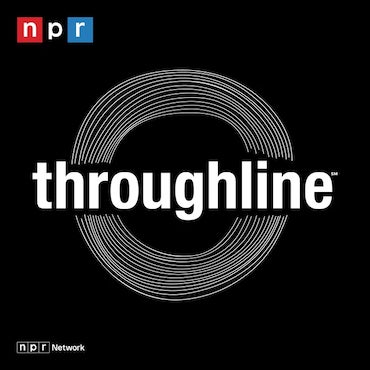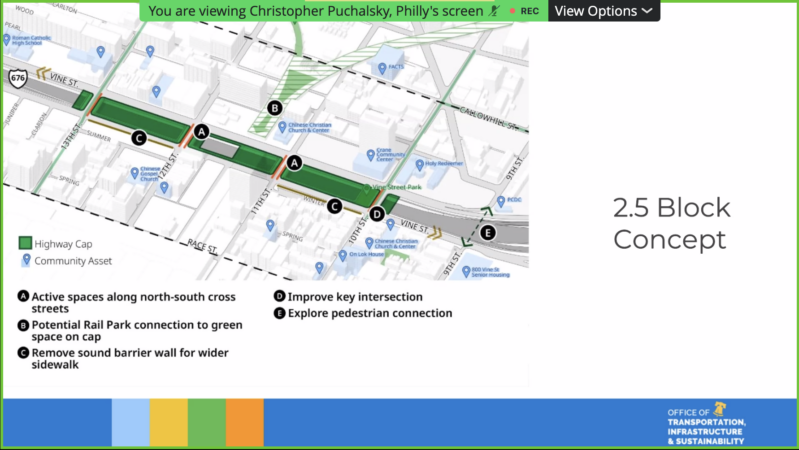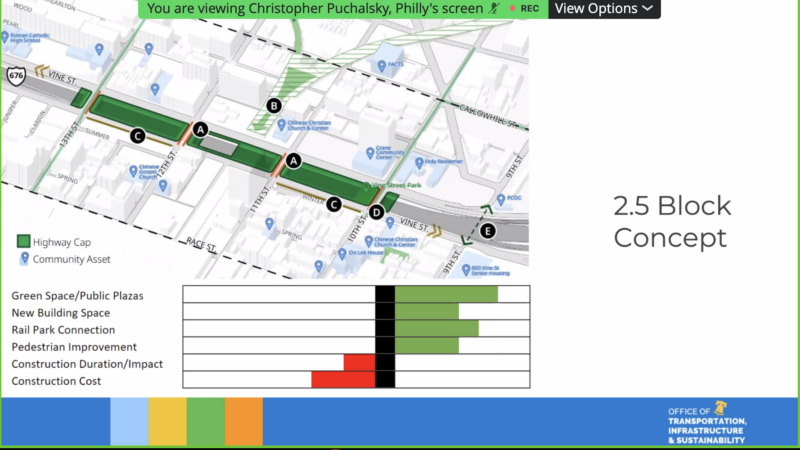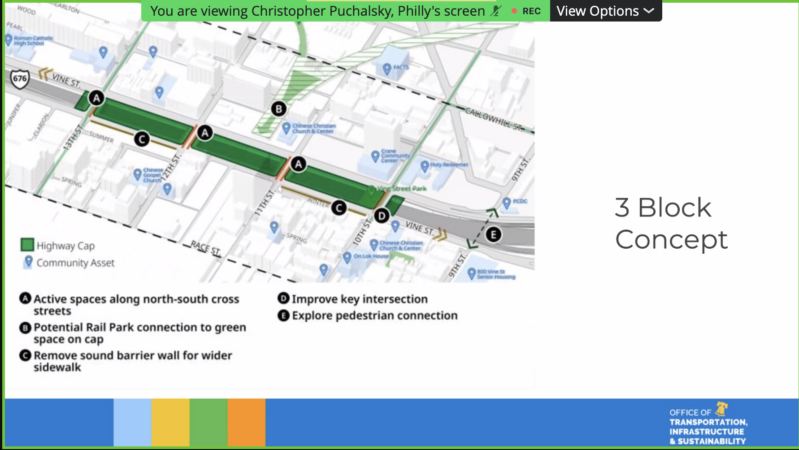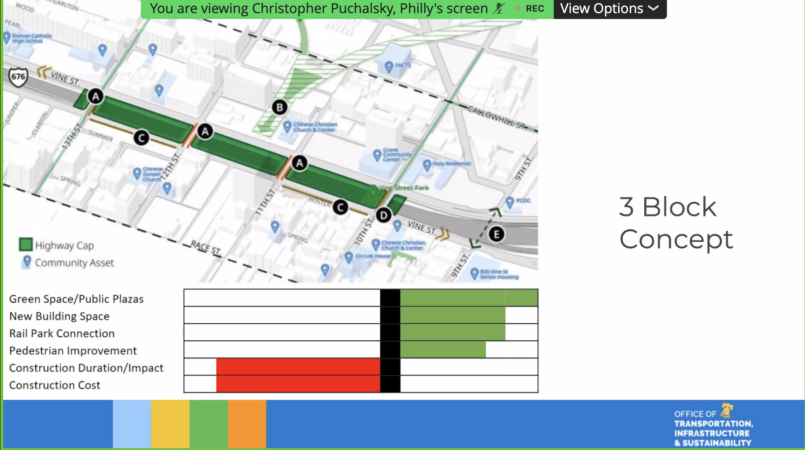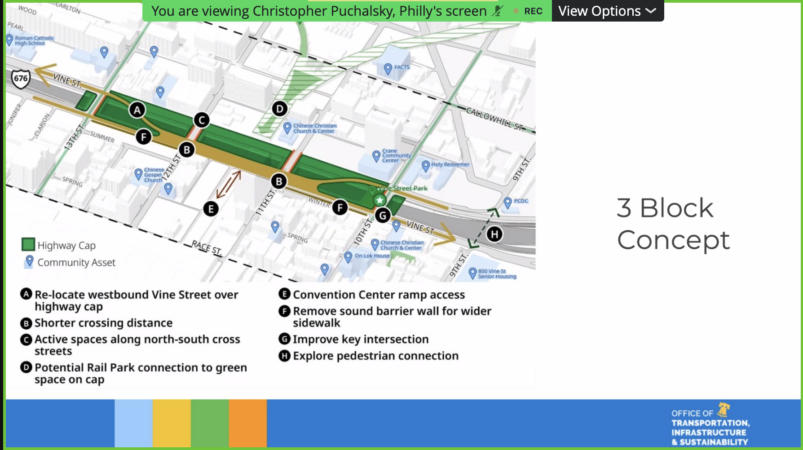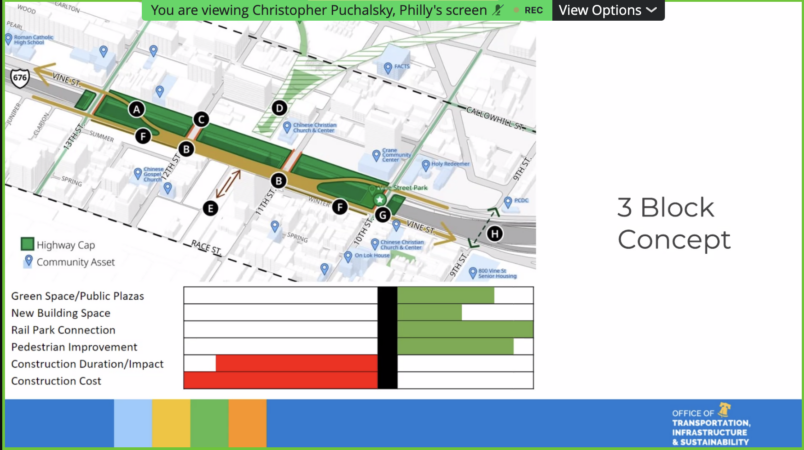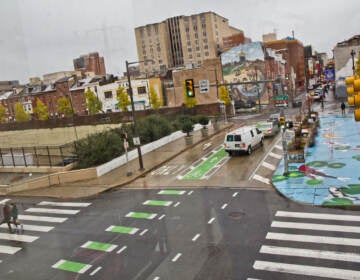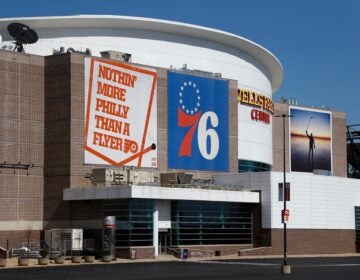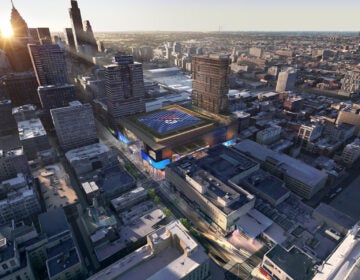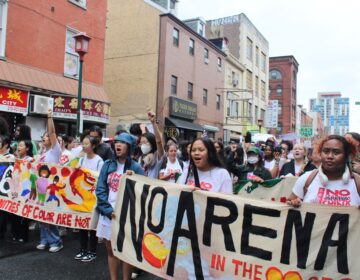Concept phase nearly complete for Philly’s plan to cap section of I-676
The city just released three possible designs for the massive project in Chinatown.
Listen 1:22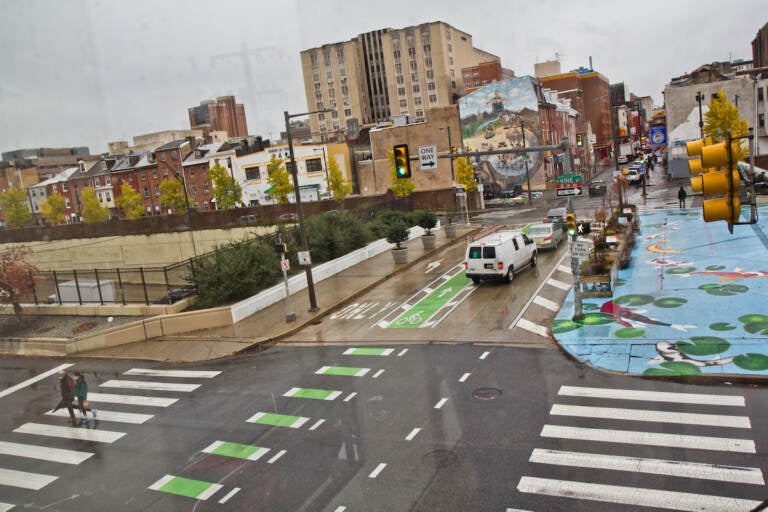
Chinatown has been separated by the Vine Street Expressway since the 1980s. (Kimberly Paynter/WHYY)
Plans to build a highway cap over a section of the Vine Street Expressway are taking shape.
City officials on Tuesday unveiled three design concepts for the highly-anticipated project in Philadelphia, which would reconnect the north and south sides of Chinatown. The goal is to help right historic inequities, while making the ethnic enclave a safer and healthier place to live and work.
The concepts are fairly similar in scope. Each version of the cap, dubbed the Chinatown Stitch, would cover the expressway roughly between 10th and 13th Streets. Every design includes green space, room for public plazas, and traffic-calming measures — priorities voiced during a months-long community engagement process led by the city and the Philadelphia Chinatown Development Corporation.
Additionally, the designs call for the removal of a sound barrier wall on the south side of the expressway, as well as a potential connection to future phases of the Rail Park.
“Some of the goals are not only to reconnect Chinatown, but also to ensure that both the residents who live here, the workers who work here, and the small businesses that operate businesses here, all can benefit from the Vine Street Expressway,” said PCDC’s executive director John Chin during a virtual news conference.
The concepts differ in terms of cost and construction time.
The more feasible design would run 2 ½ blocks. But the other two would cap three full blocks, meeting the state’s definition of a tunnel. The designation would require more capital because crews would need to install additional infrastructure related to ventilation, fire suppression, and security.
“That is going to significantly increase the costs associated with the cap,” said Megan Clarkin, the city’s project manager for the Chinatown Stitch.
How much more is unclear. None of the designs have public price tags yet, said Christopher Puchalsky, director of policy and strategic initiatives at the city’s Office of Transportation, Infrastructure and Sustainability. Officials have said it could cost between $25 million and $30 million per block for just the cap’s structural elements.
“We don’t want to put something out that we’re going to change later, in a few months,” said Christopher Puchalsky, director of policy and strategic initiatives at the city’s Office of Transportation, Infrastructure and Sustainability.
The city will have $4 million to plan and design the cap project. The money will also be used for community building and an equity plan. Advocates say the neighborhood has often been compromised by large-scale projects over the years, including the Pennsylvania Convention Center.
The total includes a $1.8 million grant from the Reconnecting Communities Pilot Program, a federal initiative designed to improve transportation infrastructure that creates barriers to “mobility, access, or economic development,” according to the program’s website. The remaining $2.2 million comes from the city, the Pennsylvania Department of Transportation, and the John S. and James L. Knight Foundation, among other sources.
The hope is to complete the concept phase of the project by the end of the month. Residents can weigh in on the design concepts online by completing a survey, offered in English and Chinese. There’s also an open house event scheduled for Sept. 18 and a pair of pop-up meetings in Chinatown on Sept. 10 and Sept. 30.
The goal is to start construction in 2028. The city will spend the next several years applying for federal construction grants through the Bipartisan Infrastructure Bill with hopes of finally securing funding to build a cap in Chinatown, said Puchalsky.
In the three decades since the Vine Street Expressway opened, organizations in Philadelphia have received federal grants and other forms of assistance to study ways to mitigate the impacts of the highway and plan future construction. And Chinatown residents have sought government funding for pedestrian safety improvements for years, including capping the highway.
“We’re trying to find something that is physically feasible,” Puchalsky said. “We want something that we can actually afford and pay for.”

Get daily updates from WHYY News!
WHYY is your source for fact-based, in-depth journalism and information. As a nonprofit organization, we rely on financial support from readers like you. Please give today.

